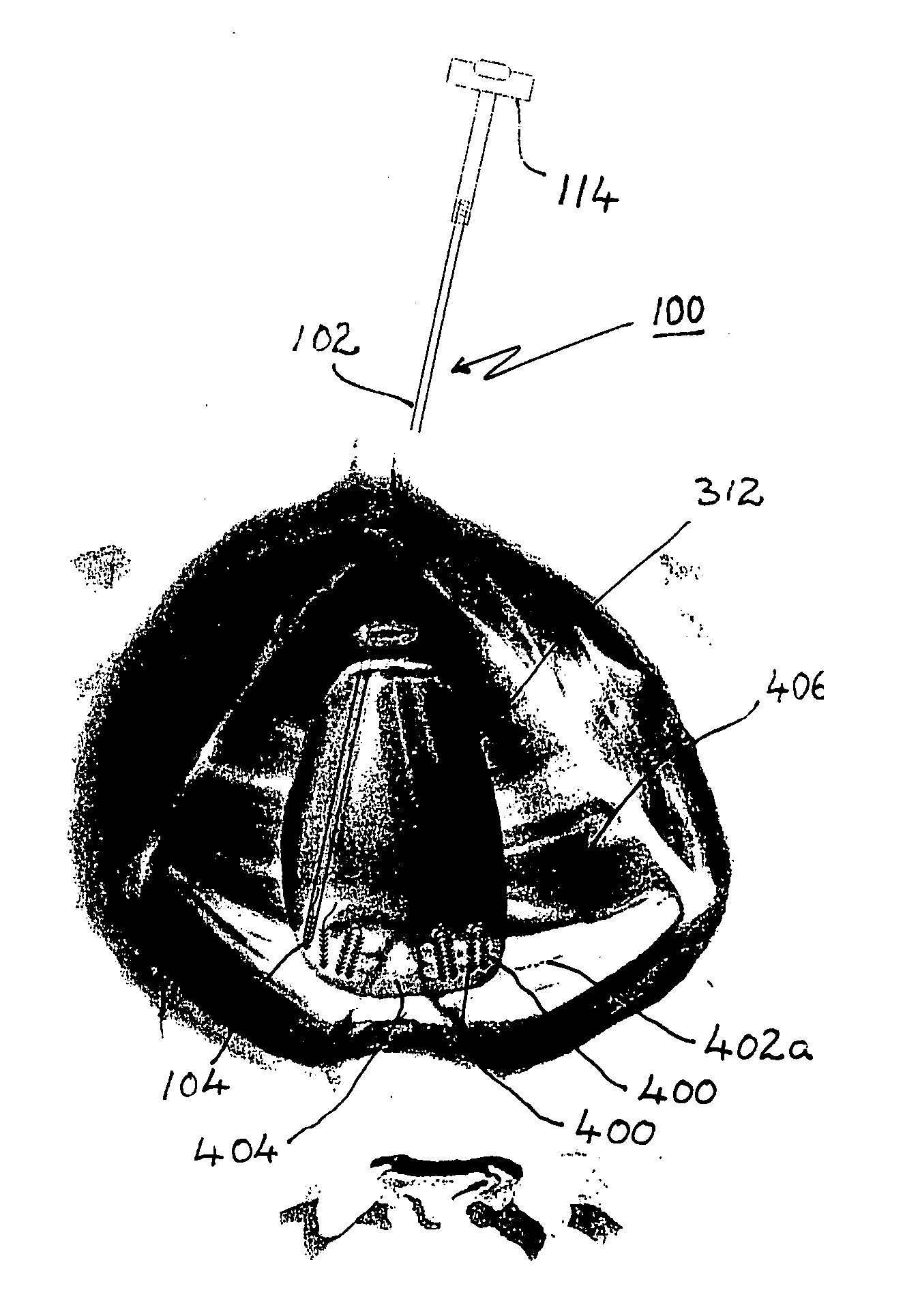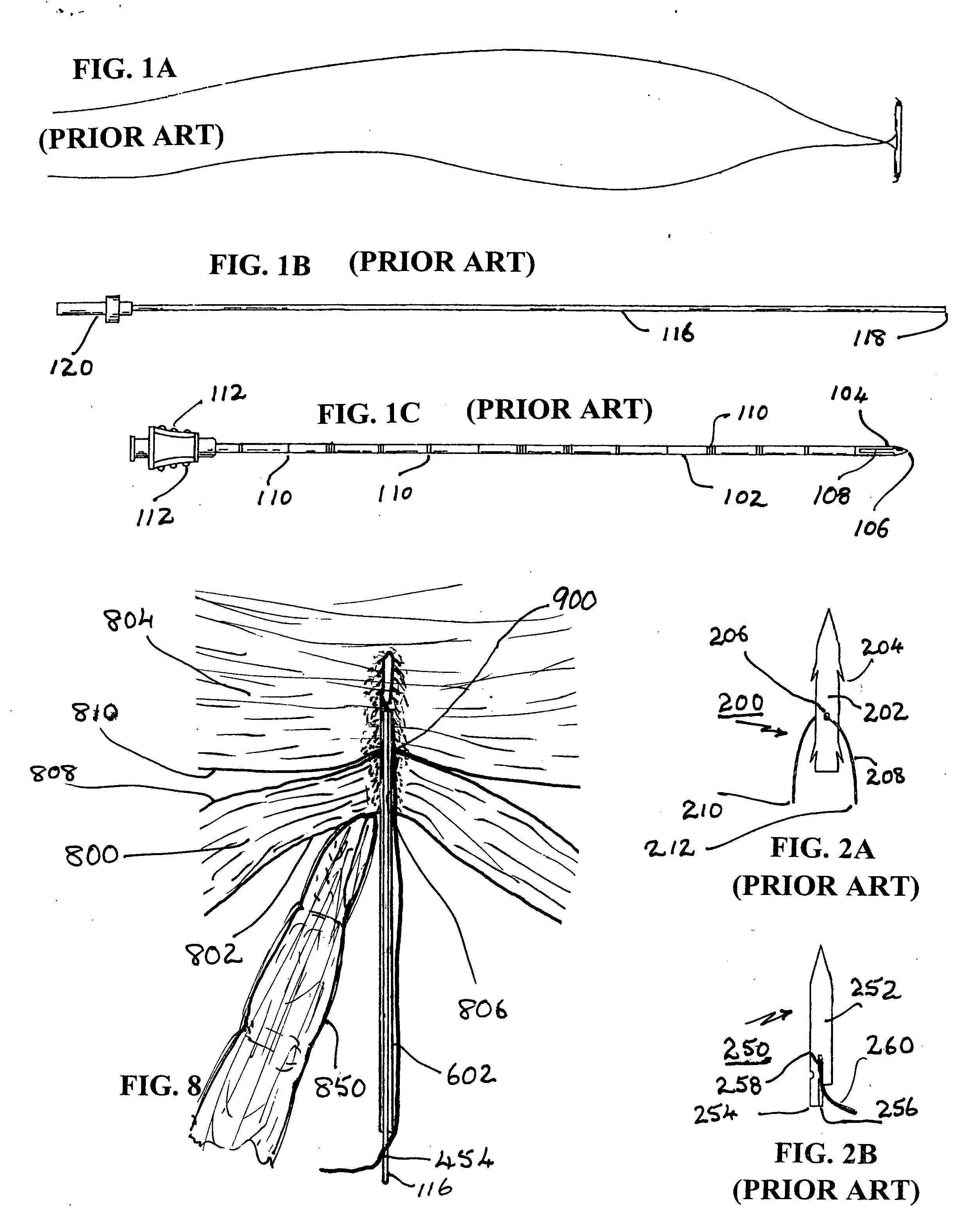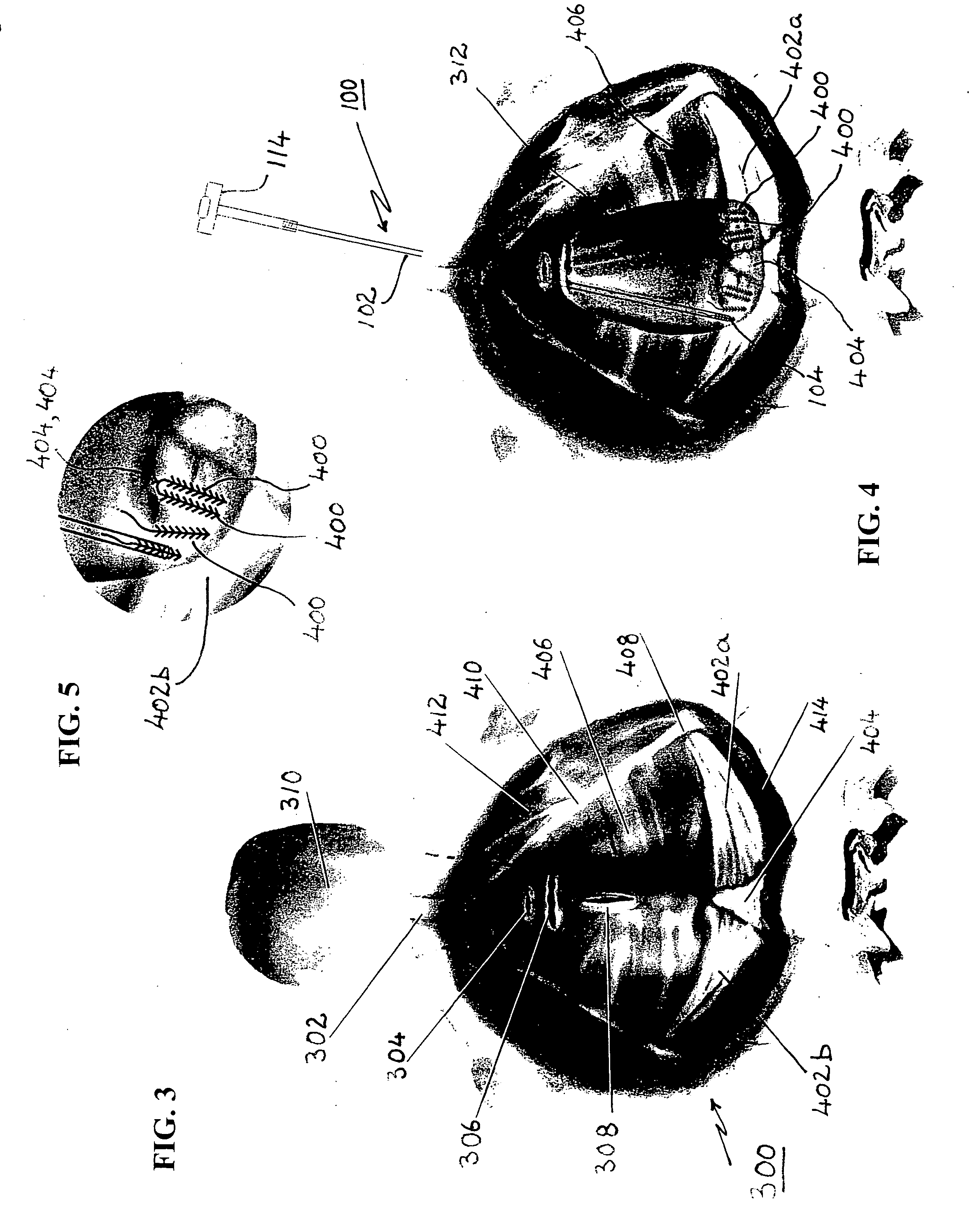Apparatus and method for incision-free vaginal prolapse repair
a vaginal prolapse and permanent repair technology, applied in non-surgical orthopedic devices, obstetrical instruments, other nursing devices, etc., can solve the problems of complete eversion of the vagina, protrusion of vaginal tissue outside the vaginal opening, and breakage of support structures within the pelvis, so as to achieve minimal invasiveness, simple effect and low cos
- Summary
- Abstract
- Description
- Claims
- Application Information
AI Technical Summary
Benefits of technology
Problems solved by technology
Method used
Image
Examples
first embodiment
[0038] The third and most important structural element of the combination per the first embodiment is an anchor element 400 (best seen in FIGS. 6 and 7) that is locatable by the previously described body 102 and stylet 116 to support a suture 454 that in turn will support the relocated vagina. LoVuolo teaches an anchor element 150 (best seen in FIG. 1) that is partially tubular and has two similar sutures 152, 152 extending approximately centrally therefrom. This anchor is entirely different from the one employed in the present invention.
[0039] The teaching of LoVuolo, as it relates to these structures, is hereby incorporated herein by reference.
[0040] A detailed description the anchor element 400 per the preferred embodiments is provided below, following a brief discussion of certain features of other known anchors that differ in various key respects.
[0041] Two known anchors 200 and 250, as disclosed in FIGS. 17 and 16 of previously described U.S. Pat. No. 6,334,446 to Beyar, are...
embodiment 600
[0047] As best understood with reference to the partial sectional view of FIG. 6, in a first preferred embodiment 600 of this invention the distal end of elongate needle-shaped body 602 has a sharp bevel-edged distal end 604 with which it can puncture, by movement in the direction of arrow “A”, into and / or through the supporting tissue and the supported tissue. Anchor element 400 has an elongate cylindrical body with a diameter smaller than the internal bore diameter of body 602 within which it is initially held just inboard of sharp-edged end 604. It may optionally, but not necessarily, have a rounded end, preferably with a distal notch or recess 450 sized to receive and hold distal end 452 of a suitable length of suture 454. A knot may be formed at end 452 or some other mechanism employed to retain end 454 in anchor element 400 such that the suture itself extends centrally, e.g., via an axial bore 456, toward the rear of anchor 400.
[0048] Anchor element 400, like anchor element 25...
embodiment 700
[0053] The second preferred embodiment 700 differs from the first one in two significant particulars. First, best understood with reference to FIG. 7, the needle-like body 702 differs from body 602 in that it has an angled sharp-edged distal end ending in a distal point 704. It is provided with a longitudinal slot that is sized so that when anchor element 400 is initially disposed within the slotted region the proximate end 470 of anchor element extends past the proximate end 708 of slot 706. The width of slot 706 must be greater than the base width of the barbs 462, 464 but smaller than the diameter of anchor element 400. This will ensure that at least some of the barbs, 464, extend out of slot 706 beyond the outer surface of body 702 even before any tissue is penetrated; and it will also ensure that anchor element 400 will not be forced sideways out of body 702 by the penetrated tissues as the puncturing process proceeds.
[0054] Most of the barbs 462, if made of preferred stiff but...
PUM
 Login to View More
Login to View More Abstract
Description
Claims
Application Information
 Login to View More
Login to View More - R&D
- Intellectual Property
- Life Sciences
- Materials
- Tech Scout
- Unparalleled Data Quality
- Higher Quality Content
- 60% Fewer Hallucinations
Browse by: Latest US Patents, China's latest patents, Technical Efficacy Thesaurus, Application Domain, Technology Topic, Popular Technical Reports.
© 2025 PatSnap. All rights reserved.Legal|Privacy policy|Modern Slavery Act Transparency Statement|Sitemap|About US| Contact US: help@patsnap.com



